The other day I was reading a vintage magazine I had been gifted and there was a very interesting article about “What life was like for young war brides”. It was really fascinating to read the interviews and hear them talking about knowing that while life was so uncertain at that time, they knew that they were in love and would do anything to just marry their soldier and worry about the rest later.
Then later while browsing the internet to read a bit more on this subject I stumbled upon a very interesting site called “Canadian War Brides” and as I was reading the stories, looking thru pictures I thought that this was a great idea for a blog post, that I think you would all enjoy.
Here are some of the wonderful goodies…..
Vintage Images of 1940s Canadian War Brides
War Bride Definition:
The term “war bride” refers to the estimated 48,000 young women who met and married Canadian servicemen during the Second World War. These war brides were mostly from Britain, but a few thousand were also from other areas of Europe: the Netherlands, Belgium, France, Italy and Germany (Source).
Nearly 48,000 Canadian servicemen who married overseas during World War II. Between 1942 and 1947, the government brought 47 783 war brides and their 21 950 children to Canada. Relatively few came before the wars end (Source).
Meet Annie Barnes Anderson Coyle and George Alfred Brown who were married on February 10, 1945 at South Leith Parish Church, in Scotland. George was from Earlton, Ontario and Annie from Leith, Edinburgh, Scotland. Annie was in the Womens Land Army during the Second World War and George was a tank gunner with the Canadian Grenadier Guards.
1940’s Wedding Dresses:
In many photos (like the one above) you will see that the bride is not wearing a wedding dress as clothes rationing and shortages of materials made this very difficult (as well as shortage on time in many bride and grooms cases). Many times you will see her in a best suit or in her service uniform.
I even read about the ultimate rationing….a wedding dress (pictured below) that was worn by 15 brides in Britain. Isn’t it stunning?!
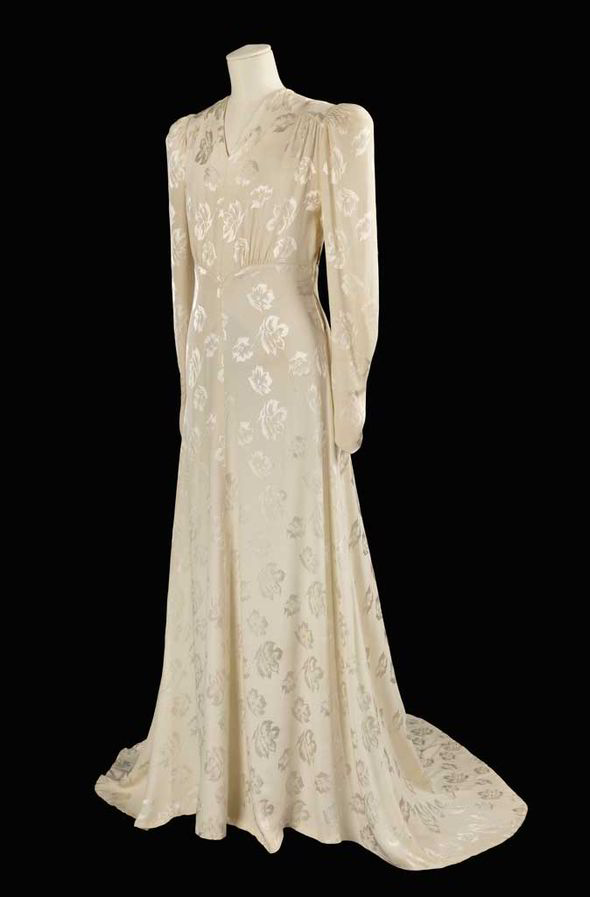
Here is CSM Wm. Lyster and Wren Coral Eswyn Ellinor on August 21st 1943. St. Richard’s Church, Aldwick, Sussex. So young and so in love.
Right before getting married, William sent a Telegraph to Canada requesting funds from his savings. I think this is really cool piece of history.
This wedding below looks to be several weddings, but I believe the others ladies are bridesmaids, hence the shorter veils. The middle couple is War Bride Rose Boulay and her husband Horace Boulay of Belledune, New Brunswick.
Nothing thrills me more than seeing vintage images in colour like the wedding of war bride Cathie Elliot to her very handsome Canadian Solider-Glen. They were married on Christmas Eve, 1940, Aberdeen, Scotland. As you can see she is not wearing a traditional white dress.
The paper Horseshoe. In many photos I saw of Canadians and non Canadians the women were carrying a paper horseshoe. What exactly for? For good luck! What a fun idea.
Now for the wedding of all weddings…The Marriage of English War Bride Olive Cochrane to Saskatchewan Native Lloyd Cochrane. The Bouquets in all these photos are just stunning and must weigh a ton.
A war bride and child arrive at Bonaventure Station in Montreal, Quebec, on 4 March 1946. The mother and child had travelled across the ocean on board the SS Aquitania (Source).
Source: The Canadian Encyclopedia
Coming to Canada
After the wedding the brides eventually had to make the trip to Canada.
Here is an image of War Brides with their Children arriving in Halifax-Pier 21. Upon their arrival they were supplied with a cookbook and then sent on their way.
Most then boarded special trains that took them to their final destinations in communities located across the country. Many of the war brides were unprepared for the conditions they found in Canada, but most stayed and adjusted to a new way of life (Source).
I have a feeling that making this trip to an unknown country to a family you don’t know and maybe a husband you barely remember must bring these women together in a way that nobody thought possible.
Canadian war brides on board the aircraft carrier Reaper as it enters the Sydney Harbour, NS. On a fashion side, I love the hair and the peep toe shoes.
War brides and their children en route to Canada. Photo taken in England, 17 April 1944.
Source: Canadian Encyclopedia
For further reading please check out:
- Canadian War Brides-Veterans Affairs Canada
- Canadian Museum of Immigration-War Brides Online Story Collection
- Vintage Photos 1920s – 1960s (Archived Blog Posts)
- World War 2 Women’s Contributions & Homefront Posts (Archived blog posts)
- Vintage Wedding Blog Posts (Archived)
Liz 🙂

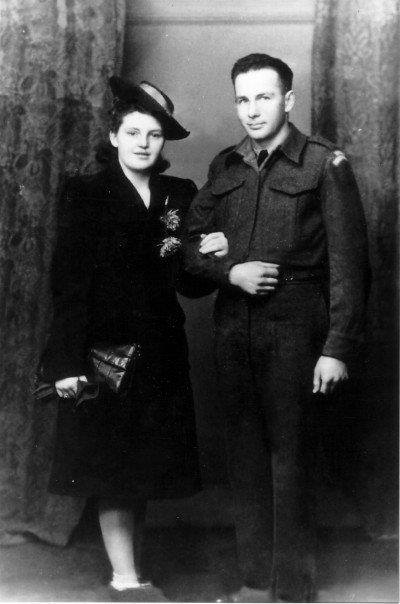
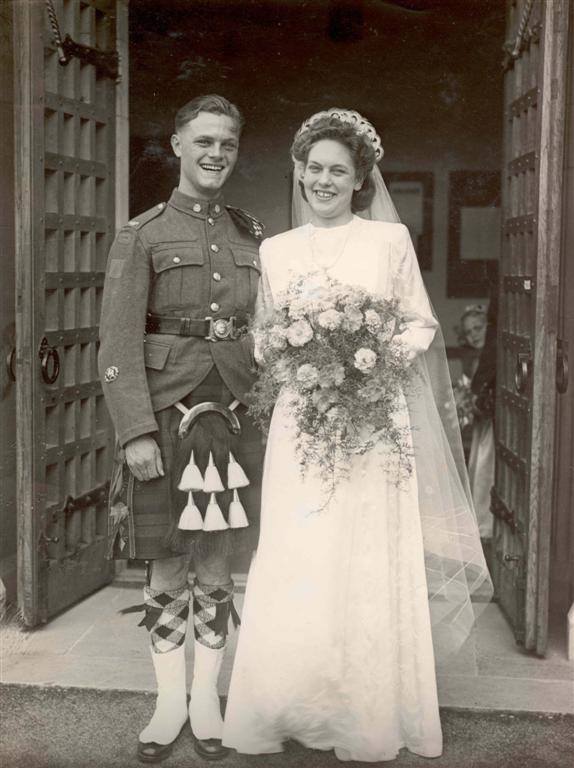
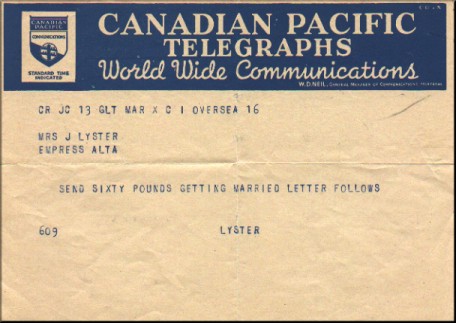
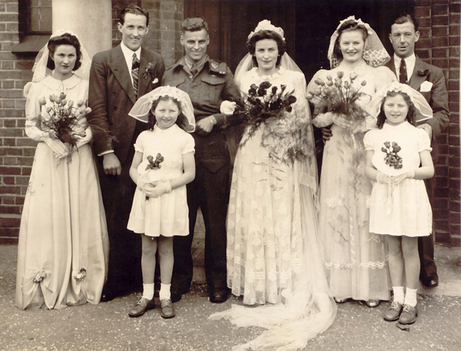
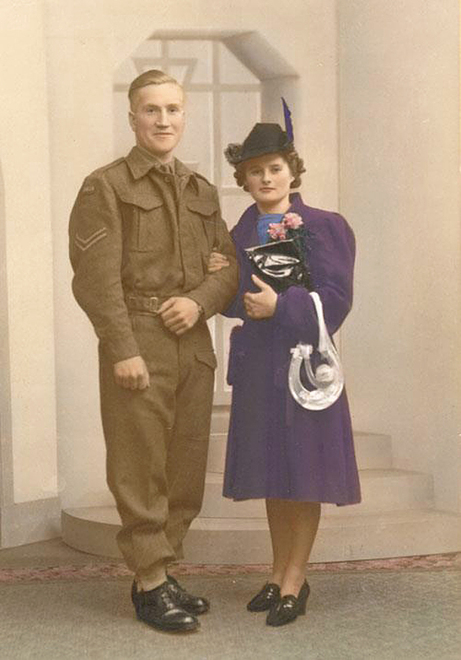
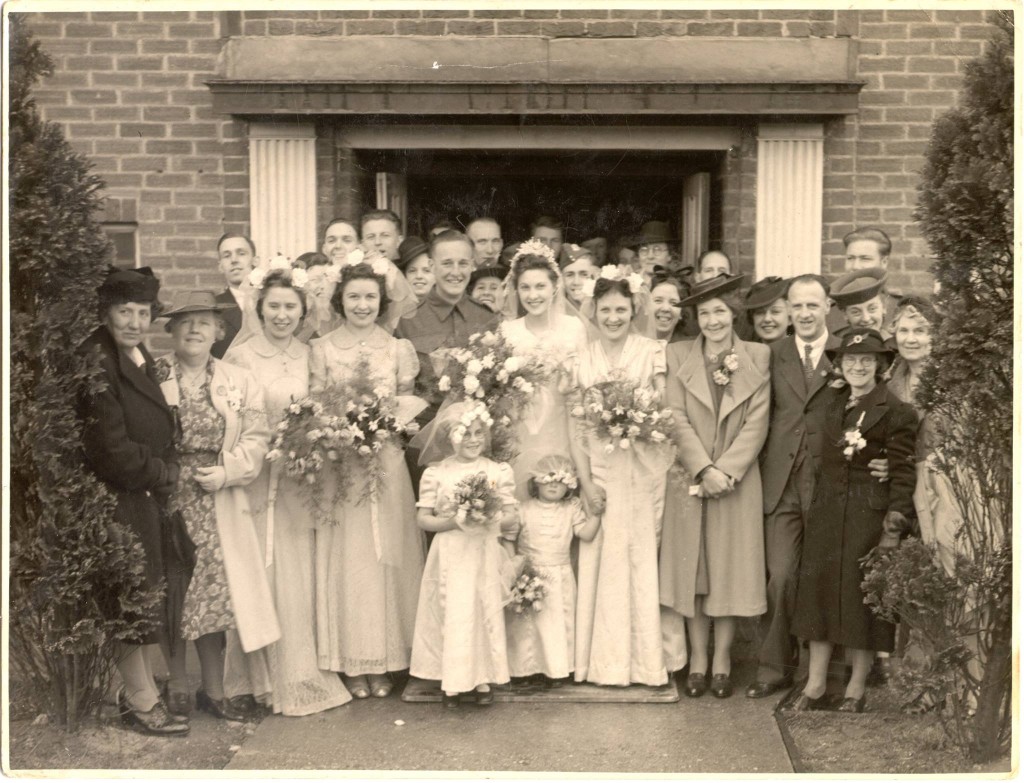
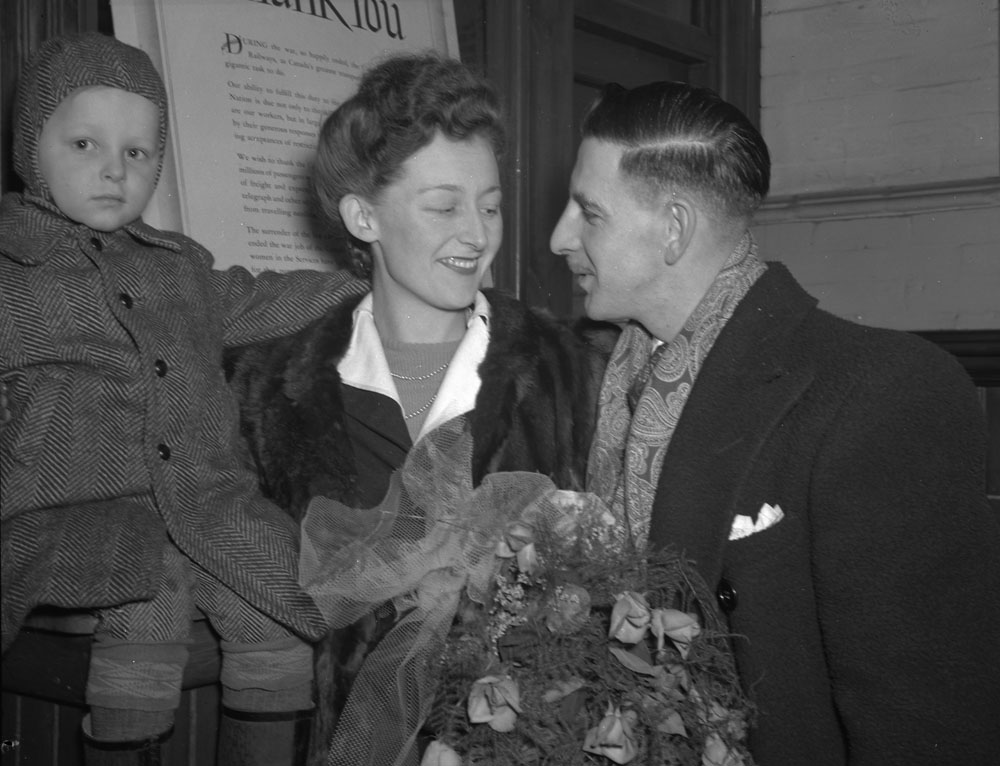
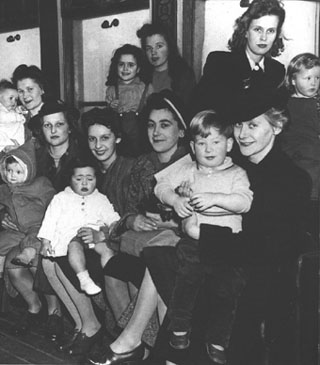
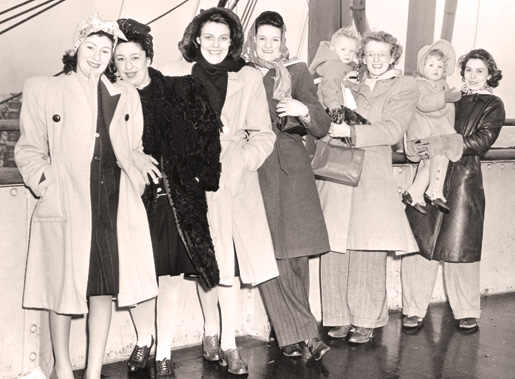

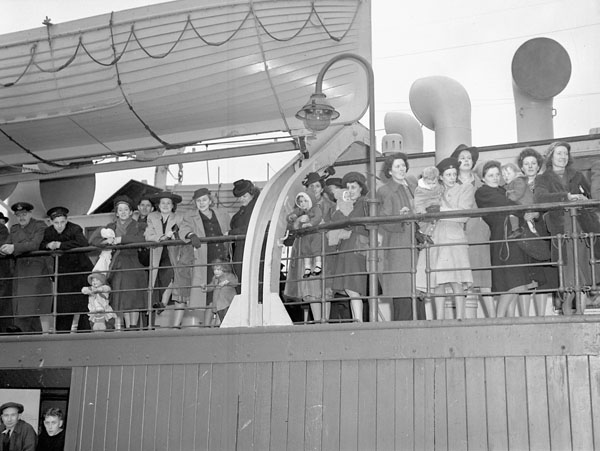
Oh this is lovely, such beautiful pictures. My great aunt was a war bride. She married an American and moved from a tiny country town in the south of England to Florida. It was a big culture shock.
The horseshoe is indeed for good luck and is still given today at weddings in the UK along with a lucky sixpence. Both are believed to bring the couple lots of luck and happiness during their marriage.
Oh my, going from England to Florida would be a culture shock! It’s very cool that you have that piece of history to tell.
I love that the horseshoe is still giving at wedding and the sixpence, how fun!
So lovely and all unique
Retro tover
I love how all unique they were too. Such style 🙂
So gorgeous and unique
Retro rover
Really wonderful, culturally poignant post, dear Liz. I’ve always been fascinated with this topic and way that the influx of British women no doubt shades Canadian society in certain ways following the war years. I had the pleasure of knowing several such ladies when I was a young girl (I did a lot of volunteer work with seniors and also lived for a few years on a street inhabited mostly by elderly folks) and each one said (and I believed them) that though they certainly experienced homesickness and culture shock, they loved living in Canada and never regretted leaving home (luckily they all seemed to have happy marriages, which no doubt aided in those positive views on their country).
Thank you so much for sharing this. I truly adored it!
♥ Jessica
oh that is so wonderful that you got to hear many of their stories first hand. I too have been very interested in this topic for a long time as well and this blog post really cannot do justice to all that this topic encompasses but if it can at least shed the light at little bit about their stories, then my job is done.
Thanks for dropping by Jessica 🙂
Lovely photos and stories. It must have been such a strange and crazy time for all the young people, and finding love in all the chaos is a beautiful thing.
I also love photos of brides in regular dress too. We get so caught up about wedding dresses these days (I did it too!) but I find something so charming in images that show how unnecessary the frills and trimmings are.
I so agree! It’s about the love, not about the dress. Dress is only for one day the love is for forever (hopefully) 🙂
I collect vintage wedding photos so I am always very pleased to see more. That coloured one is lovely! I just read a book called The Ship of Brides by Jojo Moyes which is the story of four very different Australian women who are being transported to England just after the war as they married British servicemen. It is fiction but obviously well researched and really interesting. My mum carried a horseshoe at her wedding in the 1970’s.
Oh I need to pick that book up, it sounds really good. Thank you for sharing that information.
I have been hearing that the Horseshoe is still something seen today in the UK. 100% not a Canadian thing, that is for sure lol. Very cool that your mom had one.
My mom was an English War Bride & ordered a silver horseshoe for me when I married. After almost 55 years of marriage, definitely brings good luck J Stewart
Oh wow! I love this tradition and story. Thank you so very much for sharing!
Liz
Love this topic as well. Did you see the story of the bride who’s dress was made from parachute cloth due to the fabric shortages?
I have! How incredible! Now that is called rationing 🙂
Liz